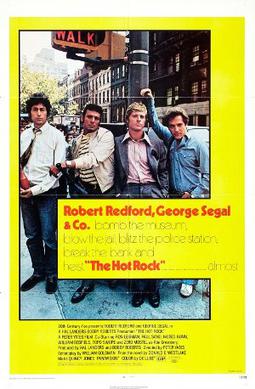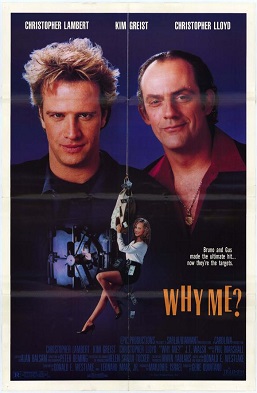
A whodunit is a complex plot-driven variety of detective fiction in which the puzzle regarding who committed the crime is the main focus. The reader or viewer is provided with the clues to the case, from which the identity of the perpetrator may be deduced before the story provides the revelation itself at its climax. The investigation is usually conducted by an eccentric, amateur, or semi-professional detective.
The following outline is provided as an overview of and topical guide to criminal justice:
Burglary, also called breaking and entering (B&E) and housebreaking, is the act of illegally entering a building or other areas without permission, typically with the intention of committing a further criminal offence. Usually that offence is theft, larceny, robbery, or murder, but most jurisdictions include others within the ambit of burglary. To commit burglary is to burgle, a term back-formed from the word burglar, or to burglarize.

Art theft, sometimes called artnapping, is the stealing of paintings, sculptures, or other forms of visual art from galleries, museums or other public and private locations. Stolen art is often resold or used by criminals as collateral to secure loans. Only a small percentage of stolen art is recovered—an estimated 10%. Many nations operate police squads to investigate art theft and illegal trade in stolen art and antiquities.
Parker is a fictional character created by American novelist Donald E. Westlake. A professional robber specializing in large-scale, high-profit crimes, Parker is the main protagonist of 24 of the 28 novels Westlake wrote under the pseudonym Richard Stark.

Donald Edwin Westlake was an American writer with more than one hundred novels and non-fiction books to his credit. He specialized in crime fiction, especially comic capers, with an occasional foray into science fiction and other genres. Westlake created two professional criminal characters who each starred in a long-running series: the relentless, hardboiled Parker, and John Dortmunder, who featured in a more humorous series.

Lawrence Block is an American crime writer best known for two long-running New York-set series about the recovering alcoholic P.I. Matthew Scudder and the gentleman burglar Bernie Rhodenbarr. Block was named a Grand Master by the Mystery Writers of America in 1994. Block has written in the genres of crime, mystery, and suspense fiction for more than half a century, releasing over 100 books.
Bernie Rhodenbarr is the protagonist of the Burglar series of comic mystery novels by Lawrence Block. He first appeared in Burglars Can't Be Choosers, published in 1977; as of 2024, he has appeared in twelve novels by Block, as well as three short stories. H. R. F. Keating described him as "one of the most delectable characters of the day", and "inimitable", while The New York Times called him "the Heifetz of the picklock" and a "timeless (...) treasure".

The Whispering Statue is the fourteenth volume in the Nancy Drew Mystery Stories series. It was written by Mildred Wirt Benson, whom many readers and scholars consider the "truest" of the numerous Carolyn Keene ghostwriters, following an outline by Harriet Stratemeyer. The book was originally published by Grosset & Dunlap in 1937. An updated, revised, and largely different story was published under the same title in 1970.
Otto Penzler is an American editor of mystery fiction, and proprietor of The Mysterious Bookshop in New York City.

The Hot Rock is a 1972 American crime comedy-drama film directed by Peter Yates and written by William Goldman, based on Donald E. Westlake's 1970 novel of the same name, which introduced his long-running John Dortmunder character. The film stars Robert Redford, George Segal, Ron Leibman, Paul Sand, Moses Gunn and Zero Mostel. It was released in the UK with the alternative title How to Steal a Diamond in Four Uneasy Lessons.

Why Me? is a 1990 American caper comedy film directed by Gene Quintano and starring Christopher Lambert, Kim Greist, Christopher Lloyd, and J. T. Walsh. The screenplay is credited to Donald E. Westlake and Leonard Maas Jr., and is based on the fifth book in Westlake's series of John Dortmunder novels.

The Hunter (1962) is a crime thriller novel by American writer Donald E. Westlake under the pseudonym Richard Stark. It is the first of the novels featuring career criminal Parker.

Burglar is a 1987 heist comedy film directed by Hugh Wilson and distributed by Warner Bros.. The film stars Whoopi Goldberg and Bobcat Goldthwait. The title of the French-language release is La Pie voleuse.
John Archibald Dortmunder is a fictional character created by Donald E. Westlake. He is the protagonist of 14 novels and 11 short stories published between 1970 and 2009. He first appeared in the novel The Hot Rock, published in 1970.
Alan Grofield is a fictional character created by Donald E. Westlake. He is the main protagonist of four of the 28 novels Westlake has written under the pseudonym Richard Stark, and a supporting character in an additional four. Grofield's first appearance was in the novel The Score, which was published in 1964.

Macavity the Mystery Cat, also called the Hidden Paw, is a fictional character and the main antagonist of T. S. Eliot's 1939 poetry book Old Possum's Book of Practical Cats. He also appears in the Andrew Lloyd Webber 1981 musical Cats, which is based on Eliot's book. Macavity is a cunning criminal and con artist; he possesses mystical powers and is the antagonist of the musical.

Jimmy the Kid is a 1982 American comedy film starring Gary Coleman and Paul Le Mat. It was directed by Gary Nelson, produced by Ronald Jacobs, and released on November 12, 1982 by New World Pictures. Following 1981's On the Right Track, it was the second theatrical film release starring Coleman.
This is a list of works by Lawrence Block, an American author of mystery fiction, with a career spanning six decades.
Tony Kenrick is an Australian-born writer of thriller fiction and caper comedies. Two of his novels were adapted into movies, and several more were optioned.










